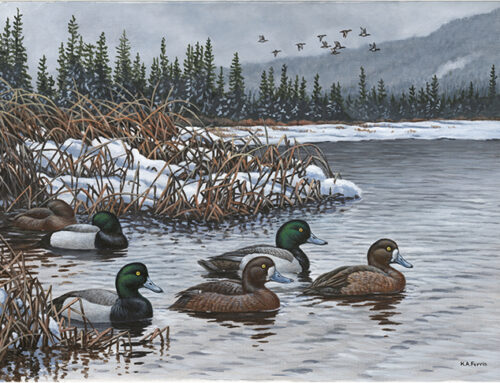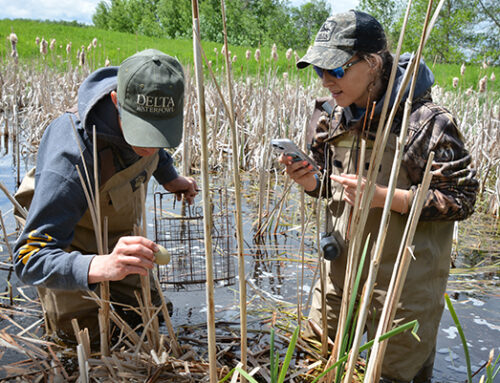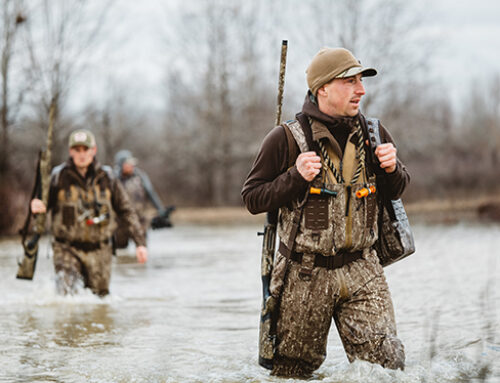What Every Hunter Should Know About the Bird Flu
Highly pathogenic avian influenza, or HPAI, is sickening and killing waterfowl in North America

By Paul Wait
Even though the U.S. Department of Agriculture has now reversed its ill-timed Sept. 2 ban on importing game birds taken in Canada, waterfowl hunters throughout North America could still be impacted by the spread of highly pathogenic avian influenza in migratory game birds during the coming months.
Following a new ruling issued by the USDA on Sept. 12, American hunters are allowed to bring game bird meat back from Canada, but the birds must be cleaned, stored and transported as follows (which is different than how many people field-dress waterfowl):
- Viscera (innards), head, neck, feet, skin and one wing must be removed.
- Feathers must be removed, with the exception of one wing — as required by U.S. Fish and Wildlife Service for species identification.
- Carcasses must be rinsed in fresh, clean, potable water prior to packaging and must not have visible evidence of contamination with dirt, blood or feces.
- Carcasses must be imported in leak-proof plastic packaging and stored in a leak-proof cooler or container during transport and import.
- Carcasses must be chilled or frozen during transport and import.
Any cooked or cured game bird meat will not be allowed to be imported, a rule consistent with prior seasons.
Hunter-harvested wild game bird trophies entering the United States from Canada must be fully finished, or accompanied by a VS import permit, or consigned directly to a USDA Approved Establishment. Hunters may find an approved taxidermy establishment by visiting the Veterinary Services Process Streamlining search page and searching for a taxidermist with the HPAI product code in your state.
To better understand HPAI and its implications for both migratory birds and hunters, Delta Waterfowl interviewed Dr. Andrew Ramey, director of the Molecular Ecology Laboratory at the U.S. Geological Survey’s Alaska Science Center in Anchorage, Alaska.
Delta: We’ve heard about bird flu for many years. What is different about this outbreak?
Ramey: What we have here is a highly pathogenic avian influenza virus. Historically, prior to 2002, HPAI was a poultry disease. But since 2002, HPAI has become more common in wild birds. It wasn’t until 2014 that HPAI was detected in wild birds in North America. It was the result of an introduction from Asia to wild birds in Alaska. This current outbreak is only the second outbreak to affect wild birds in North America. What we’re seeing in this current outbreak is the number of birds affected is far greater than in the past. In the previous outbreak, there were 100 wild birds detected in North America. Thus far during this outbreak, the USDA and Canadian Food Inspection Agency have confirmed more than 3,000 wild birds infected in North America, and the distribution of these birds is much wider geographically than in the past. This outbreak is unprecedented and different than in the past.
Delta: What kind of monitoring efforts are happening?
Ramey: Many agencies are involved in response to the ongoing outbreak. A variety of local, state and federal agencies are working together to receive reports of sick or dead birds. Some programs are actively swabbing birds as part of banding programs or hunter-harvested birds. Samples are being collected from carcasses and swab samples are being collected from live birds and hunter-harvested birds, and then the swabs are tested for viruses.
Delta: What are the signs of a bird that might have HPAI?
Ramey: The signs are commonly neurologic. So, birds that aren’t able to walk, aren’t able to fly, are swimming or walking in circles. They might have a twisted neck, lack of coordination — those are some of the main signs.
Delta: If you encounter a bird exhibiting those signs, what should you do?
Ramey: A person should not handle sick or dead birds. It would be helpful if they would report it, probably the local land management agency would be the best place to start, and the state veterinarian would be equally good. Those folks can assess whether the birds should be tested and collect the samples.
Delta: Should hunters take added precautions this season when handling ducks or geese they’ve harvested?
Ramey: There are various recommendations. The lead agency on prevention would be the Center for Disease Control. The CDC is reporting that the risk of avian influenza to human health is low. They have some verbiage on their website (https://www.cdc.gov/flu/avianflu/prevention.htm) about precautions hunters can take, but perhaps the most helpful guidance might be from the USDA and the U.S. Fish and Wildlife Service. I think it’s things like avoid the harvest of sick and dead birds, wash your hands with soap and water immediately after handling game, wear disposable gloves when handling game and cook meat to an internal temperature of at least 165 degrees.
Delta: What other resources are available to learn more about HPAI?
Ramey: There are a wealth of resources, including a recent USGS Q&A on HPAI in wild birds:
For additional information on the distribution of confirmed HPAI detections among domestic and wild birds, and wild mammals, in North America:
For information on the species, location, and health status of wild birds sampled in the U.S. from which HPAI detections have been made:
For information on the distribution of HPAI in wild birds in Canada and species affected:
https://cfia-ncr.maps.arcgis.com/apps/dashboards/89c779e98cdf492c899df23e1c38fdbc
For information regarding steps hunters can take to reduce the risk of HPAI to human and domestic animal health:
https://www.aphis.usda.gov/publications/animal_health/2015/fsc_hpai_hunters.pdf
Delta: What else should people know about HPAI?
Ramey: One point to emphasize is that currently, I view this outbreak as primarily a threat to avian health in North America, with all of the disease being witnessed in wild birds, poultry and backyard birds.






In episode 37 of the podcast Ramey mentioned about how he uses a 10% bleach solution. We are required to use that for our hip boots and muck boots and other equipment before we go into a wetland for bog turtle surveys. You spray the solution on, wait for 10 minutes, then wash off with water before going into the wetland. As long as you rinse the boots off well after the bleach solution, the boots are fine. They do seem to bleach a little but not enough that it should cause concern.